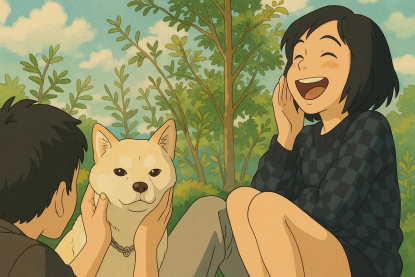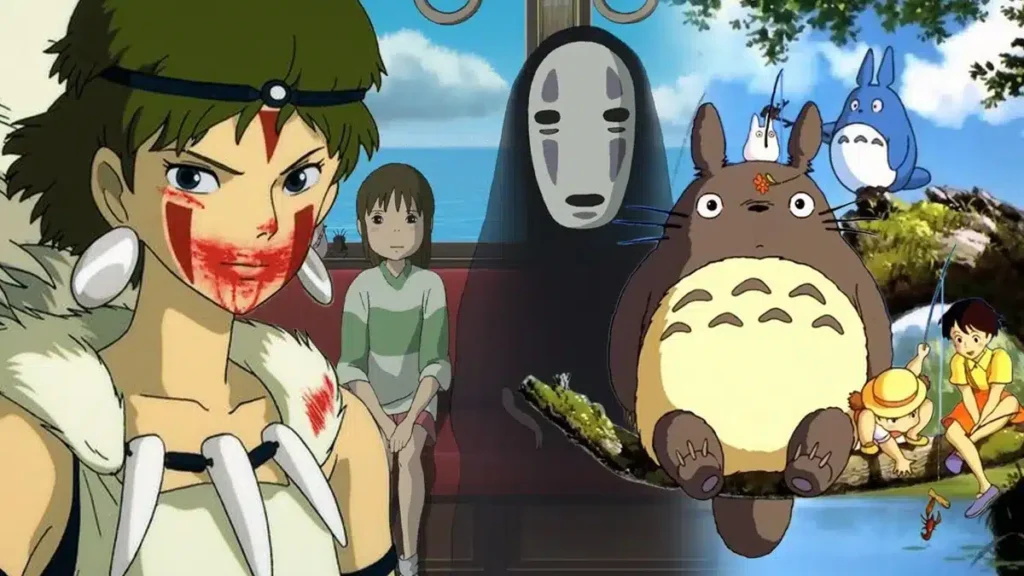In 2025, Openai’s GPT-4O revolutionized the creative situation by allowing users to generate images reminiscent of Studio Ghibli’s iconic animation style. This development has caused global trends and flooded social media platforms
AI-generated Ghibli-style portraits and scenes. However, this surge in AI artistry is a question about the future of authenticity, ethics, and human creativity.
What sets the GPT-4o apart?
The GPT-4O is more than just a text-based model. Integrates multimodal functionality to allow processing and generation of both text and images. This means that the user can enter detailed prompts, and the GPT-4O creates corresponding images according to the scene or style described. The ability to understand context, maintain consistency across multiple objects, and render text within images makes it a powerful tool for creative endeavors.
The appeal of Ghibli style art
Studio Ghibli’s art is characterized by a soft colour palette, intricate details and an Andam am-like atmosphere that evokes nostalgia and wonder. The studio’s unique aesthetics have captivated viewers around the world, making it a popular style for AI-generated art. The GPT-4o allows users to replicate this fascinating style and realize imaginative concepts.
Studio Ghibli’s visual identity is characterized as follows:
soft soft muted color palette: A gentle shade that evokes a sense of nostalgia. Hand Drawn Texture: Tactile quality that puts the scene on its own. ∙Fantastic elements: Integration of magical creatures and surreal landscapes. ∙A focus on nature: a lush environment that often plays a central role in storytelling.
Together, these elements resonate emotionally and create a unique and immersive experience that is visually stunning.
Create Ghibli style art with GPT-4O
Accessing the GPT-4o image generation function
Openai’s GPT-4O model includes image generation capabilities that allow users to create visuals based on text prompts. This feature is available to both Freeand ChatGpt and users, but certain restrictions may apply to the free tier.
Step-by-step guide
1. Access GPT-4O: Go to Openai’s ChatGPT platform.
2. Upload Image (Optional): Click on the “+” or the paper clip icon to upload and convert the photo.
3. Enter a detailed prompt. In the text box, describe the desired scene or transformation. for example:
“Turn this photo into Studio Ghibli-style illustrations with soft pastel colors, intricate details and whimsical atmosphere.”
1. Review and Improvements: If the initial output is not perfect, provide feedback to the GPT-4o. You can specify adjustments such as changing colors, additional elements, and style adjustments. 2. Download and edit: When you’re satisfied, download the image. To further enhance it, consider using editing tools such as Photoshop and Canva.
Effective prompt tips
empical: Details scenes, characters, and feelings of hope.
Use of descriptive description languages: incorporate adjectives that capture the essence of Ghibli, such as “whimself”, “dreamy”, or “nostalgic.”
Reate iteration: Do not hesitate to improve prompts based on output.
for example
Prompt: Turn this image into an animated Studio Ghibli style portrait. Use a soft color palette, whimsical backgrounds, and facial features inspired by Ghibli characters. Styling like “My Neighbor Totoro” or “Encouraged Scenes”
Original image:
GPT-4O:

Access the AI Image API with Cometapi
Cometapi provides access to over 500 AI models, including open source and specialized multimodal models such as chat, images, and code. Its main strength lies in simplifying the traditionally complex processes of AI integration. Access to major AI tools such as Claude, Openai, Deepseek, and Gemini is available through a single unified subscription. You can use APIs in Cometapi to create music and artwork, generate videos, and create your own workflows.
Cometapi offers a price that is much lower than the official price to help you use GPT 4o ImageGeneration. After registering and logging in, you will earn 1 dollar on your account. Cometapi.cometapi register and experience what you pay to go, gpt-4oapi (model name: gpt-4o-all) consists of Kometapi pricing.
∙ Input token: $2/m token
∙Output token: $8/m token
GPT-4O-IMAGE API (GPT-4O-IMAGE): Pricing: $0.04. Cometapi Integrates the latest GPT-4o-image and GPT-4O APIs per pay.
Navigate issues and limitations
Access and performance issues
GPT-4O is available to all ChATGPT users, including free tier users, but SomeUSERS reports occasional bugs or content policy restrictions. These issues can prevent the creation of a particular style or scene.
Ethical and legal considerations
Using AI to replicate Studio Ghibli’s distinctive style has sparked discussions about copyright infringement and artistic integrity. Hayao Miyazaki, co-founder of Studio Ghibli, emphasizes the value of human creativity and expresses concern about AI-generated art. Furthermore, the lack of clear legal guidelines for the use of unique art styles in AI-generated content adds complexity to this issue.
Explore Alternative Tools for Cometapi
Beyond the GPT-4o, some platforms offer Ghibli-style AI ART Generation: ∙Midjourney: Known for its high quality output and customizable prompts.
QWEN2.5-MAX: Alibaba’s QWen chat is equipped with QWEN2.5-MAX, allowing you to generate high-quality Ghibli-style artwork based on text descriptions.
gemini 2.0 flash: Provides tools to convert photos into different artistic styles. The Google’s Gemini 2.0 Flash model now allows you to create highly detailed creations that include Ghibli-style images from scratch. You can also ask the chatbot to optimize the Generated image using a follow-up prompt.
grok 3: Developed by Xai, Grok is an advanced AI tool that allows users to generate Ghibli-style images based on text prompts and convert existing photos into anime style artwork. Additionally, users can refine their images further with Follow-Upprompts.
These alternatives are valuable, especially if the GPT-4o is experiencing limitations or limitations.
You can register as a Cometapi user to test these tools and choose the tool that’s best for you. Cometapi has integrated the Midjourney API, QWen 2.5 Max API, GROK 3 API, and Gemini 2.0 Flash Exp-Image-Generation API.
Ethical and legal considerations
Discussions about AI-generated art
The rise of AI-generated art sparked debate about originality and intellectual property. Critics argue that replicating individual art styles like Ghibli could infringe the creative rights of original artists. Hayao Miyazaki, co-founder of Studio Ghibli, has expressed his strong opposition to AI in animation, describing it as “aninesurt to life itself.”
Openai’s stance
In response to concerns, Openai is implementing measures to limit prompts to directly mimic the style of living artists. However, the wider studio style is accessible and allows you to create Ghibli-inspired images without explicit replicas.
Best Practices for Creating Ethical AI Arts
Respect the original creator
direct Avoid direct replication: Avoid prompts intended to accurately replicate existing ArtWorks.
Fury Use for Personal Fun: Avoid commercializing AI-generated art that resembles protected styles.
credit Credit Inspiration: Acknowledge the original artists and studios that inspire your work.
Accepting creativity
Use AI tools not as an established work of shortcut Tomimic, but as a means of exploring new ideas and styles. This approach promotes innovation while celebrating the contributions of original artists
Conclusion
The GPT-4O offers an exciting way to explore and create Ghibli-style art, making Studio Ghibli’s fascinating world accessible to a larger audience. However, as we embrace these technological advances, it is essential to keep in mind the relevant ethical and legal considerations. By using AI responsibly and acknowledging the contributions of original artists, we can ensure that the magic of art continues to inspire and resonate with future generations.



